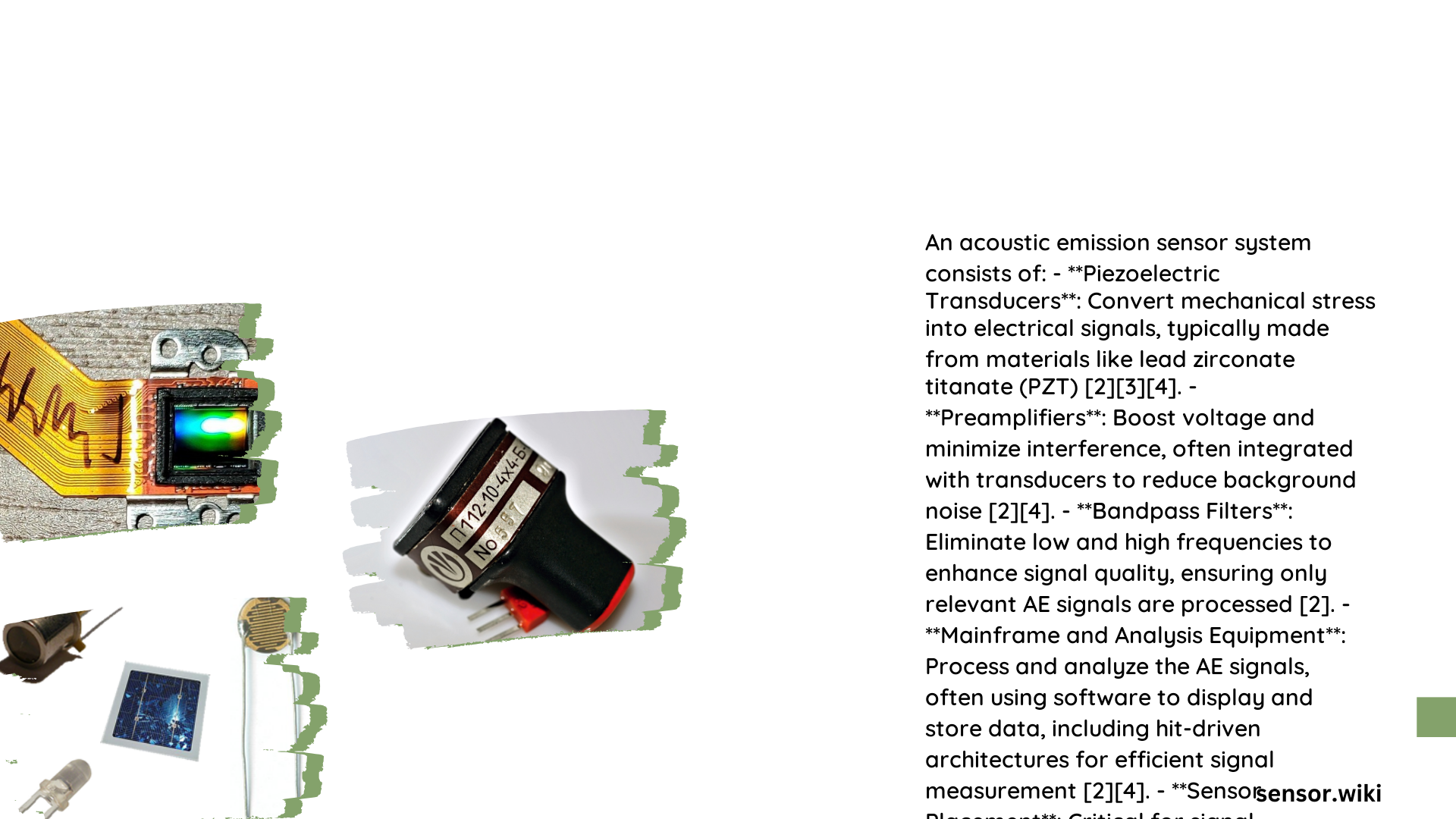Acoustic emission sensor systems represent sophisticated technological solutions for detecting and analyzing structural integrity, material stress, and potential failure mechanisms across multiple industrial domains. These advanced systems leverage precise sensor technologies to capture and interpret acoustic signals generated by material deformations, enabling real-time monitoring and predictive maintenance strategies.
What Are Acoustic Emission Sensor Systems?
Acoustic emission sensor systems are specialized monitoring technologies designed to detect and analyze sound waves produced by materials under mechanical stress. These systems convert acoustic energy into electrical signals, providing critical insights into material behavior, structural health, and potential defect detection.
Key Components of Acoustic Emission Sensor Systems
| Component | Function | Typical Specifications |
|---|---|---|
| Piezoelectric Sensors | Signal Conversion | Frequency Range: 1 kHz – 1 MHz |
| Signal Conditioning Units | Signal Amplification | Gain: 20-60 dB |
| Data Acquisition Systems | Signal Processing | Sampling Rate: 2-10 MHz |
How Do Acoustic Emission Sensors Detect Material Behavior?

Acoustic emission sensors operate through several critical mechanisms:
- Wave Propagation Detection: Capture high-frequency sound waves generated during material deformation
- Signal Transformation: Convert mechanical vibrations into electrical signals
- Frequency Analysis: Interpret signal characteristics to identify potential structural anomalies
Advanced Calibration Techniques
What Are Primary Calibration Methods?
- Reciprocity Calibration
- Uses vector signal analyzer
- Requires large steel block as transfer medium
-
Provides absolute signal value determination
-
Step-Force Calibration
- Employs mechanical impulse input
- Compares known input spectrum with transducer response
- Standardized by ASTM E1106
What Performance Metrics Matter?
Performance evaluation of acoustic emission sensor systems involves multiple critical parameters:
- Sensitivity Levels:
- 70 kHz: 62.5 dB ref. 1 V/(m/s)
-
300 kHz: 24.1 dB ref. 1 V/(m/s)
-
Frequency Response:
- Typical Range: 1 kHz – 1 MHz
- Broadband Calibration: Ensures accuracy across three frequency decades
What Challenges Exist in Acoustic Emission Monitoring?
Challenges include:
– Environmental interference
– Signal-to-noise ratio optimization
– Complex wave propagation modeling
– Computational processing requirements
Signal Processing Strategies
How Are Complex Signals Analyzed?
- Real-time computational algorithms
- Finite element modeling
- Autoregressive-moving average (ARMA) techniques
- Advanced filtering mechanisms
What Industries Benefit from Acoustic Emission Sensor Systems?
- Aerospace structural monitoring
- Manufacturing quality control
- Civil infrastructure assessment
- Power generation equipment maintenance
- Renewable energy systems
Technological Considerations
- High sampling rates (2-10 MHz)
- Robust computational infrastructure
- Advanced signal processing capabilities
- Precise calibration methodologies
Conclusion
Acoustic emission sensor systems represent a sophisticated technological approach to non-destructive testing and structural health monitoring. By leveraging advanced signal processing and precise sensor technologies, these systems provide unprecedented insights into material behavior and potential failure mechanisms.
Recommendations for Implementation
- Select sensors with appropriate frequency ranges
- Implement rigorous calibration protocols
- Invest in high-performance data acquisition systems
- Develop comprehensive signal processing strategies
References:
1. NDT.net – AE Sensor Calibration Methods
2. Broadband Calibration Techniques
3. ASTM E1106 Calibration Standard
